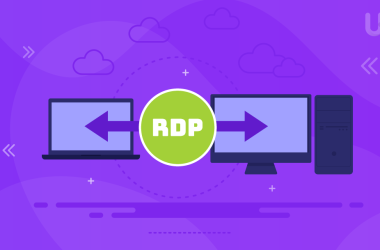What comes to mind when you hear the word ‘domain name’? For tech experts, it immediately conjures an image of www.domain-name.com. However, non-tech professionals only get the idea when someone explains it’s a street address for a website.
Enter domain name investing. But what exactly is it, and how does it work? As domain names are hot commodities in today’s tech-driven world, buying and selling them can be a lucrative form of investment.
Fret not; This page covers what you need to know about domain name investing. Read on to learn how to buy and sell them for profit.
Understanding Domain Name Investing
A domain name is a unique address for a particular website on the World Wide Web. Think of it as the digital equivalent of a street address in the real world. Users type in the URL “www.example.com” (example.com as your domain name) to access your site.
Domain names come in three primary types:
- Top-level domain (TLD) – The highest level in the domain name system hierarchy (.com, .org, .net, and .edu)
- Generic top-level domain (gTLD) – A specific domain name compared to a regular TLD (.tech, .store, .blog, and .app)
- Country code top-level domain (ccTLD) – Specific to countries (.uk domain for the United Kingdom, and .us domain for the United States)
A domain name is vital in the online realm for the following reasons:
- Digital identity: It sets you apart from other websites.
- Brand reputation: It kicks your brand up a notch.
- Online visibility: It helps you climb the search engine results pages (SERP).
- Website traffic: It drives more and more traffic to your site.
- Site conversion: It goes as far as boosting user engagement, lead generation, and sales conversion.
Leigh McKenzie, Community Advocate at Traffic Think Tank, believes that a domain name can be instrumental to online prominence, brand recognition, and business success.
McKenzie explains, “Investing in the right name relevant to your business and industry can help boost your search engine optimization (SEO) strategies. Not only will it enhance your online presence on SERP, but this name will also drive traffic to your website.”
So, what is domain name investing?
As the name suggests, domain name investing involves buying and selling domain names. A hot commodity in today’s digital landscape, domain names are worth investing in.
Why not?
As an investor, you’ll gain financial opportunities by investing in high-quality domain names. Consider the most expensive purchases: cars.com for $872 million in 2014, business.com worth $345 million in 2007, and LasVegas.com for $90 million in 2005.
Learn how to buy and sell domain names in the next section.
How To Buy and Sell Domain Names
Domain name investing is a lucrative business targeting high-profile clientele. Not only should you purchase high-quality domains, but you should also negotiate with high-quality clients. As an investor, consider some effective marketing and business solutions for your investment.
That said, here’s how to buy and sell domain names:
Domain name buying
- Search for valuable domain names. Research is the initial step to take when looking for a fully qualified domain name (FQDN). Ensure the name is short, memorable, and related to your business or industry. Likewise, consider industry trends and relevant keywords that your target audience might use.
- Use tools for finding domains. What better way to optimize your domain name search than to leverage tools and platforms? Think of domain registrars, domain marketplaces (Sedo, Flippa, and Afternic), and expired domain listings (ExpiredDomains.net). They can make your search much easier and faster!
- Assess the value of domain names. With a list of potential names, it’s time to evaluate which is the most valuable. Consider key factors, such as length (shorter names), keywords (relevant words or phrases), industry trends (popular ideas in your niche), and brand capability (domain names ideal for branding).
- Decide on high-quality domains. After your thorough evaluation, you can now decide which domain names to purchase. However, there are a few crucial steps to take before proceeding to the final step.
- Register the chosen domain name. Start by selecting a registrar best suited to your needs. With the registrar’s search tool, check the availability of this domain. If available, follow the registration process by filling out information, such as your personal data, contact details, and registration period. Finally, your domain name is registered!
Albert Kim, VP of Talent at Checkr, suggests performing research for domain name investing.
Kim argues, “We’ve had a handful of clients in the field of software development with robust applications and advanced features. However, some fail to effectively market their products and services due to poor or unprofessional domain names. We suggest investing in the right names that can positively impact their organization and resonate with their target market.”
Domain name selling
- Set proper pricing for your domain name. It takes performing due diligence and understanding its value to determine its actual price. They will help you get an estimate based on domain length, keyword relevance, and market demand.
- List your domain on marketplaces. After setting the price, it’s time to put your domain name out on the market. There are various platforms where you can list your domain. On top of these platforms are Sedo (largest domain marketplace), Flippa (digital asset buy-and-sell platform), and Afternic (domain distribution network).
- Market your domain name. Of course, you must implement digital marketing strategies to promote and sell your domain name. For instance, create a landing page highlighting your domain’s benefits. You can also leverage social media for networking and promotion. Finally, perform email outreach to target and contact prospects.
- Negotiate with your potential buyer. Negotiation is key to success in selling your website’s domain name. First, learn how to justify your domain’s price according to its actual benefits. Likewise, set the minimum price you’re willing to accept. Finally, be open to the buyer’s offer and reach a mutual agreement.
- Transfer the domain ownership. After a successful negotiation and agreed-upon sale, you can now transfer the domain’s ownership. Start by unlocking the domain or disabling any lock settings. Then, provide the buyer with the authorization code. Finally, your buyer initiates the transfer through their registrar.
Brooke Webber, Head of Marketing at Ninja Patches, recommends employing digital marketing tactics for domain selling.
Webber says, “This type of business is a lucrative investment. However, it targets high-profile clients—those building business empires and securing their digital presence. As such, you need to ‘up’ your marketing game plan, whether SEO, email outreach, content marketing, or social media management.”
Earn some best practices for investing in domain names in the next section.
Top Strategies for Domain Investing
At this point, you know what it takes to buy and sell domain names. However, what does it take to invest in this peculiar industry successfully? Consider some of the best practices for domain investing below:
- Look for niche markets. Domain names for niche markets are more profitable than those with a general or broad scope. However, you must research emerging and underserved industries and acquire relevant domains. With the rise of AI, for example, opt for names like aiinnovations.com, smartbots.net, and futureai.org.
- Purchase expired domains. They are more advantageous than newly registered domain names. Why? They already have existing SEO backlinks and organic traffic for online visibility and website traffic. As mentioned, you can unravel a goldmine of expired domains via the ExpiredDomains.net website.
- Consider domain holding vs. flipping. While domain holding involves using the same domain for value appreciation, domain flipping entails selling your bought domain for profit. The former is best for long-term ROI, while the latter is ideal for immediate cash flow.
- Keep up with upcoming trends. As cited, you must stay up-to-date with emerging and existing trends in different industries. Then, invest in domain names aligned with these trends to stay ahead of the curve. For example, leverage domain names related to AI, blockchain, and sustainability.
- Leverage AI for customer support. When it comes to domain name investing, you handle potential clients with different levels of knowledge. However, the concept of technology and investments combined can be quite complicated. As such, harness the AI power for providing customer support and creating a knowledge base to help them make informed decisions.
Kyran Schmidt, co-founder at Outverse, advises offering AI-powered customer support for domain name investing. “Customer service is key to delivering a great customer experience. In the business of selling domains, you likely have a reasonably diverse range of knowledge levels among customers interested in your digital products.”
Schmidt further explains, “Because of this, providing a knowledge base with an AI chat interface or a full AI support agent can significantly help cut your overhead cost. This translates to better customer experience and high returns.”
Conclusion
Domain names are crucial to business success in today’s digital landscape. They can help boost online identity, brand awareness, web visibility, site traffic, and website conversion.
That said, invest in domain names as a profitable business. However, follow the practical steps outlined above for buying and selling domains. More importantly, consider our top strategies for investing in domain names.
With all these tips and steps, you can maximize the income potential of your domain name investment!
Looking forward to buying an ideal domain name? Avoid common domain name mistakes and ensure your online success by choosing a memorable, brand-aligned domain. Browse the vast selection of domains available for purchase at UltaHost.










